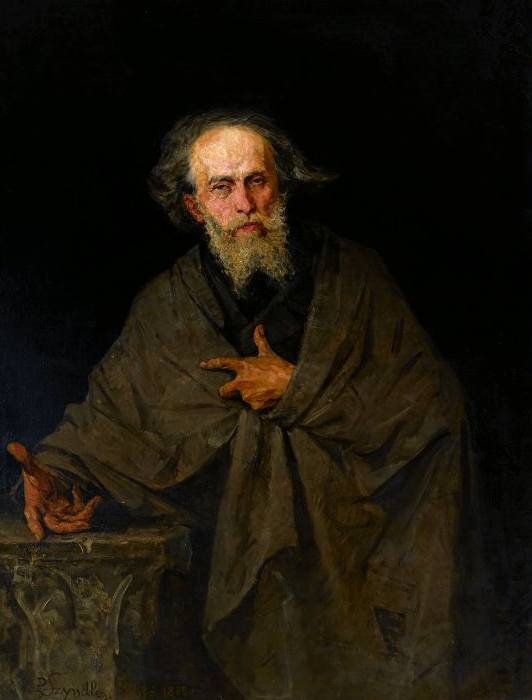On May 23, 1883, in the St. Casimir’s asylum in Paris, a Polish poet- Cyprian Kamil Norwid died. Impoverished and alone, noticed but misunderstood by his contemporaries, he was ahead of his time. His works (the most famous are “Pilgrim”, “Bem’s mourning rhapsody”, “Song from our land”, “To this country …” or “Chopin’s Piano”) gained admiration only decades later.
Norwid was born on September 24, 1821, in the Laskowo-Głuchy estate. His father worked for the magnate Radziwiłł family of the coat of arms Trąby. Cyprian Kamil was educated at a gymnasium in Warsaw, and then he studied painting and drawing. From 1842 he stayed abroad, mainly in France, but also in Germany, Italy, Belgium and the United States. Struggling with deepening health problems (including tuberculosis), he tried to actively participate in important historical events, such as the Spring of Nations, the Crimean War, and the January Uprising. He wrote a lot trying to get the support of the richest representatives of Polish emigration. He spent the last few years of his life in an asylum.
During the time of Norwid, Polish culture developed a characteristic concept of a “national bard”. At that time, the Polish elite was fallen to the fashion for mysticism, characteristic of Romanticism. “Feeling and faith” were valued higher than “scientist’s glass and eye”. The bard was supposed to be a poet, a prophet, a spiritual leader of the nation under the partition, responsible for its fate, understanding its past and foreseeing its future. Adam Mickiewicz, Juliusz Słowacki and Zygmunt Krasiński were such bards. In-salon discussions, Norwid was also discussed as a Polish bard. Some experts in Polish Romanticism claim that if it were not the principle of “omne trinum perfectum” (every trinity is perfect) Norwid would be given the honorable name of Polish bard.
Norwid was fully appreciated only at the turn of the 19th and 20th centuries. Interestingly, the poet’s work experienced another renaissance during the Polish People’s Republic. At that time, Norwid was an inspiration not only for people of culture but also for scientists. After 1989, a research center on his work was established at the Catholic University of Lublin, and one of the university buildings was called Collegium Norwidianum. The creation of Cyprian Kamil Norwid inspires Polish artists until today.





